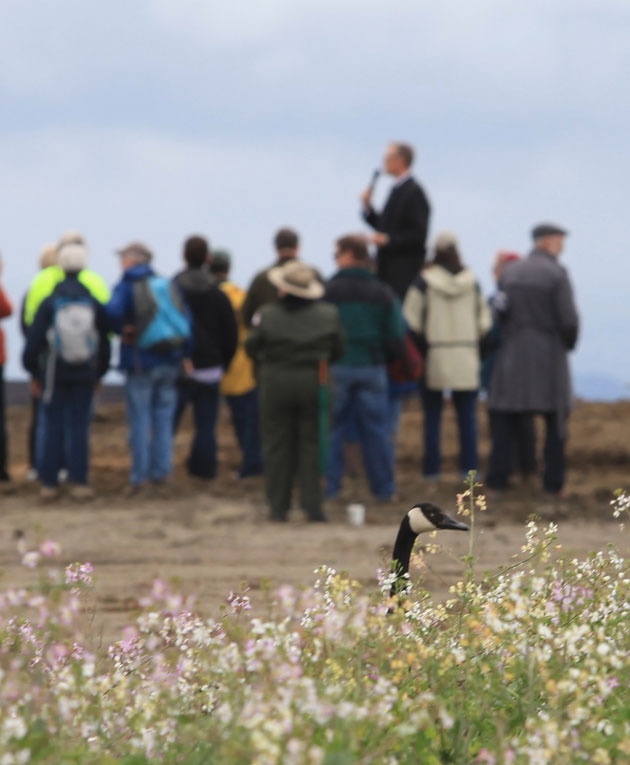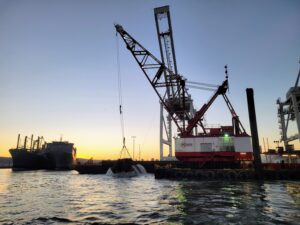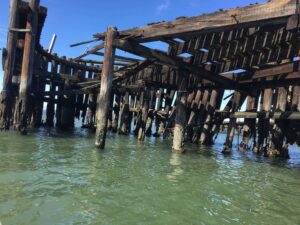Last week a backhoe knocked a hole in the outer levee at the former Hamilton Army Airfield, letting the Bay seep back onto a landscape that had undergone 18 years of preparation for this moment. Everyone in the Bay’s movement to restore 100,000 acres of tidal wetlands seemed to be on that levee: the engineers who design them, the activists who champion them, the biologists who want more of them to save endangered marsh species, the public servants who sign the permits to dig or fill or disturb them, even the Congress people who get the appropriations to pay for them. What a turnout!
It was a beautiful day of rain and sun, with tiers of gray and white clouds piling up on top of the tiers of mud, water and plants that are this vast new wetland. The quiet stormy day brought out the birds too. Congressman Jared Huffman noted the stilts, herons, raptors and egrets in his remarks. “Once a center for flight, Hamilton is going to now be a center for another kind of flight, a showpiece for the Bay’s wetland renaissance,” he said. The hovering news helicopter embellished his point but ruined the magic of being on a relatively remote levee nearly out in the middle of the Bay.
Men in hard hats and orange vests mingled with do-gooders in Gortex and the local military brass. “It was a long time coming,” everyone said as they trekked back and forth across the broad back of the levee, marveling at the trickle of water spilling from the high tide on the outboard side onto the low mudflat on the other. “It took decades of advocacy, negotiation, planning and construction,” said the Coastal Conservancy’s Sam Schuchat. Not to mention more than $100 million bucks..
Phil Williams couldn’t resist helping a little. Standing next to the breach, he kicked at the margin with his rubber boot to let more water through – doing what engineers can never resist: tinkering.
Williams is one of several generations of engineers and biologists who’ve made a science out of how to restore wetlands in San Francisco Bay. Among all the projects in the 100,000-acre push, Hamilton has been one of the longest-running and most complex. It started with a base closure and a land use dispute, evolved into a palatable way to deepen the Oakland inner harbor and “beneficially reuse” the dredged material, and morphed into one of the Bay’s most meticulously designed and engineered mosaics of wetland habitats, including uplands, seasonal ponds, oak forest, and tidal marshes.
“I feel like I jumped on board a cross country trip right when we pulled into the driveway back home,” said Army Corps’ Lt. Colonel John K. Baker, who had only been on the project for two years before the breach. For 50 years Hamilton served to “secure our nation,” he said. For the next 50 it will help protect us from new threats: species extinctions and sea level rise.
Later, I realize I won’t ever be able to go back to that outboard levee. That place is now for the birds, and some very small mice, but not for people. Part of me wishes I could stroll out on the levee anytime I want. Part of me is glad I can’t. It’s up to humans to take the high road.

Ariel Rubissow Okamato will have a story on the new section of Bay Trail that skirts the edge of the Hamilton restoration project in the July issue of Bay Nature.





